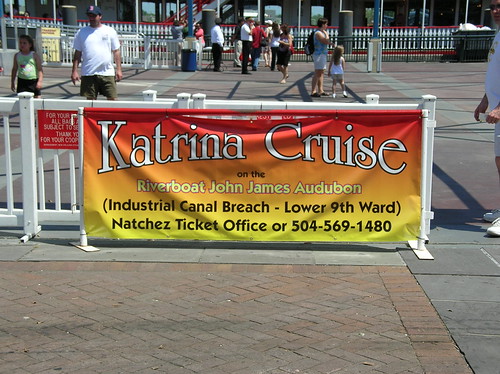
President Obama will be here next week to participate in a "Heckuva Job, Mitch" tour.
The schedule calls for Obama to travel to several New Orleans neighborhoods with Mayor Mitch Landrieu to meet with residents, including youths, who have rebuilt their lives over the past 10 years.The President is from Chicago. Landrieu already sold one commenter on the value of having a Katrina in that city. Maybe he can convince Obama as well. That couldn't be much worse than talking about "city and corporate leaders" doing "innovative economic growth" things. That's pretty much just Mitch using the President as a prop to celebrate the "Volunteer Entrepreneurism" grift. They'll probably visit the St. Roch Market.
The president also is expected to deliver remarks on the region's rebirth, talking about what's possible when citizens, city and corporate leaders work together to lift their communities and rebuild in ways that make them more innovative and positioned for economic growth.
Meanwhile, has the mission of rebuilding a more sustainable and better protected New Orleans been accomplished? Probably not.
The American Society of Civil Engineers has warned since soon after Katrina that the 100-year standard set by the National Flood Insurance Program makes no sense for major metropolitan areas like New Orleans, said Gerald Galloway, a University of Maryland research engineer who spoke on behalf of the society for this article.Preliminary reports of the President's itinerary haven't indicated whether or not he will be talking about flood control or coastal loss. He may just stick to the "innovation" and "resilience" basics if they want to keep things upbeat.
"Van Antwerp said 100 years is the stopping point to something higher," Galloway said. "It's not a safety standard, it's a flood insurance standard."
Van Antwerp pointed out California has passed a law requiring its urban levees to withstand at least a 200-year flood event.
Ed Link, another research engineering professor at the University of Maryland who chaired the corps' Interagency Performance Evaluation Task Force that investigated the levee system after Katrina, agreed with Galloway.
"100-year is an insurance criteria and should not be used as a standard for risk reduction for a metropolitan area," Link said. "In fact, it is not a risk criteria at all. It is a legacy standard based on hazard level, not on the level of losses that can occur."
Some engineers even question the ability of New Orleans' new levee system to protect from flooding caused by a 100-year storm.
Bob Jacobsen, a Baton Rouge-based engineer hired by the east bank levee authority, conducted a surge modeling study that indicated some earthen levee locations could be overtopped today by waves atop storm surges from a 100-year storm. The model also showed that significant parts of the east bank system will have subsided below the 100-year design level long before the levees' 50-year life expires in 2057.
Earlier this year, the corps agreed with part of his findings and recommended that its levee designs be reanalyzed by 2018.
The state of Louisiana's 2012 coastal Master Plan for restoration and protection calls for increasing the level of risk reduction for the New Orleans system to 500 years. But that's a project that won't begin until 2035, said Kyle Graham, executive director of the Coastal Protection and Restoration Authority.
No comments:
Post a Comment